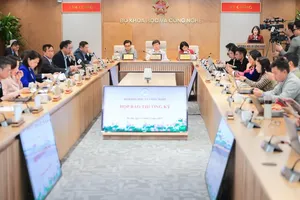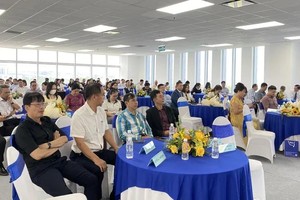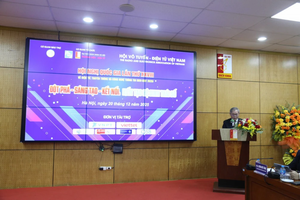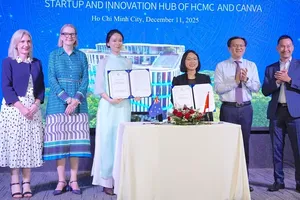
In the discussion, IT experts stated that Make-in-Vietnam cloud computing will provide the country with a great boost since most work-related activities nowadays are related to cloud computing. Estimations show that in the next 3 years, this technology will become the key for Industry 4.0 to carry out successfully in Vietnam.
Cloud computing, according to Deputy Editor in Chief of Vietnamnet Vo Dang Thien, is the most critical factor of the digital infrastructure, which will in turn promote both digital transformation and digital economy. It is, therefore, vital that Vietnam can master this technology as soon as possible.
Statistics reveal that revenues of the domestic cloud computing market reach around VND3,200 billion (approx. US$133 million). There are now 27 database centers with 270,000 servers in Vietnam, controlled by 11 domestic businesses.
However, these companies only account for 20 percent of the market share, which means they need to closely collaborate with one another so as not to lose the game right in their homeland.
Predictions show that in 2025, the Vietnamese cloud computing market will earn $500 million, with a growth rate of 30-40 percent. This means cloud computing is truly a lucrative investment to many IT companies.
Deputy Director General of the Authority of Information Security Nguyen Khac Lich said that cloud computing has been considered by the Ministry of Information and Communications (MIC) as the new-generation telecoms infrastructure for the next 5-10 years.
MIC approved the use of cloud computing as a digital platform for the development of the digital government, economy, and society. It leads to the national determination to master this technology and to create more Make-in-Vietnam cloud computing products in the upcoming time.
At the moment, Vietnam is one of the few nations to introduce a technical criteria set to evaluate and select suitable solutions related to cloud computing platforms for its e-government.
This set consists of 153 criteria in total, including 84 points regarding specifications that a cloud computing platform needs to meet. The others are about information safety and security.
























